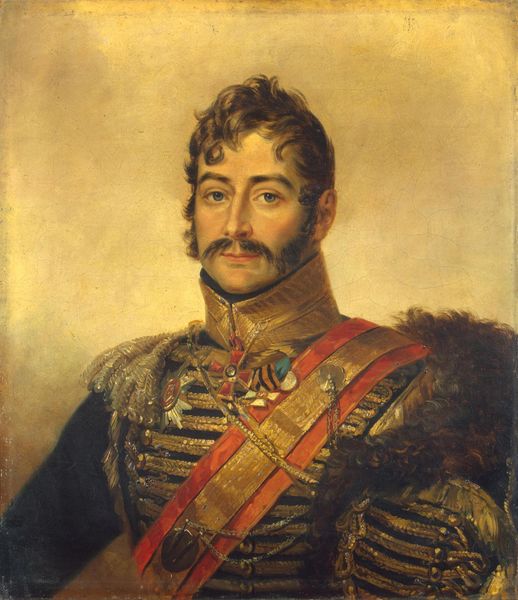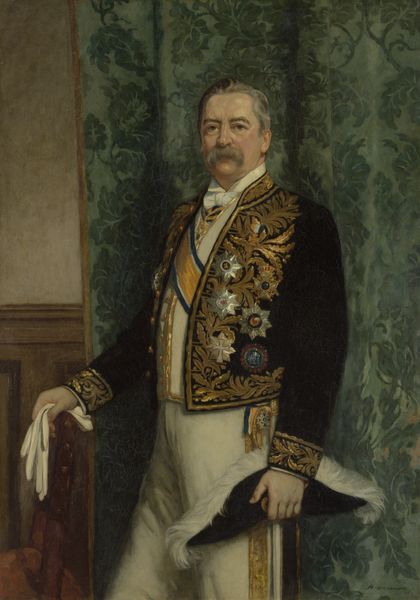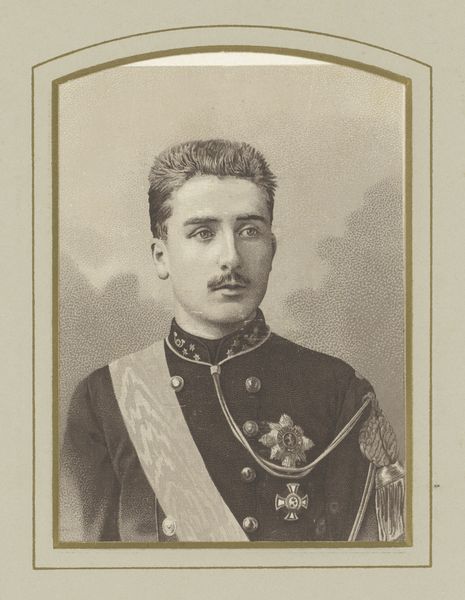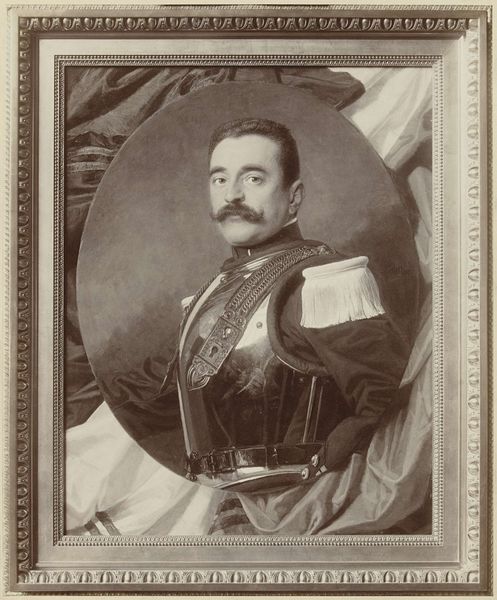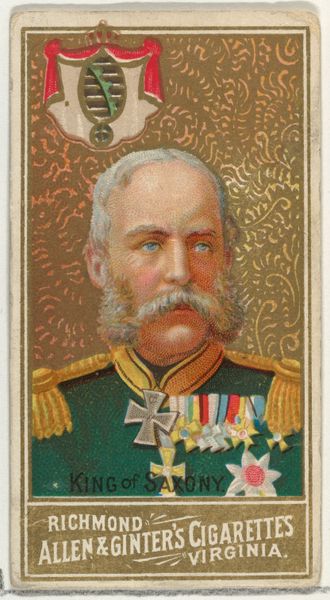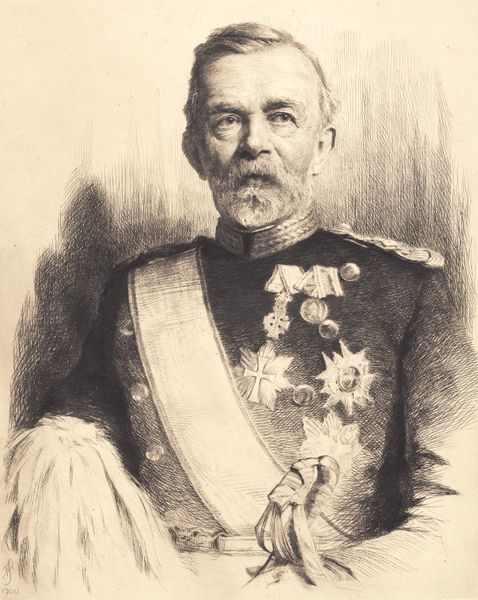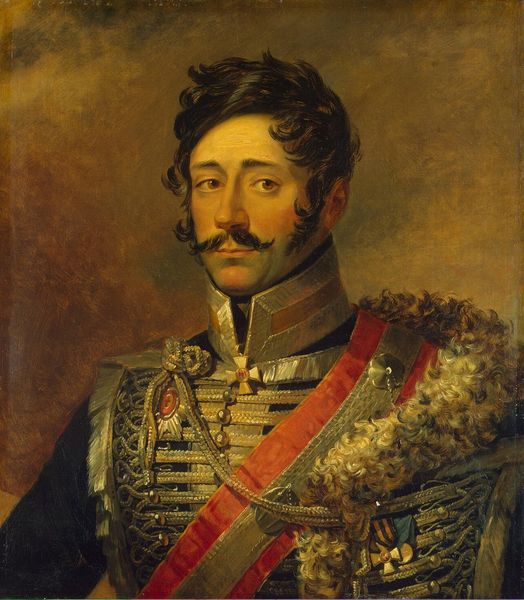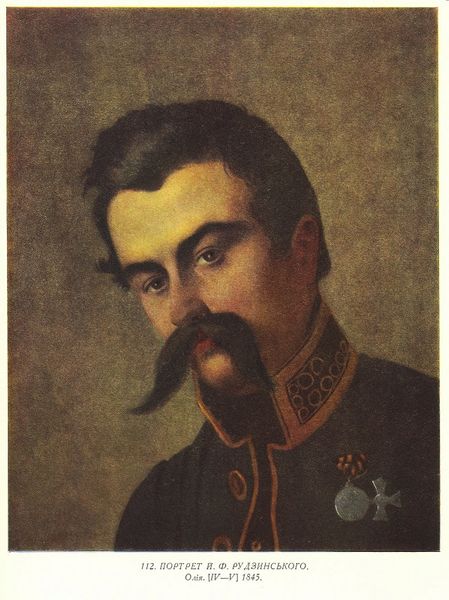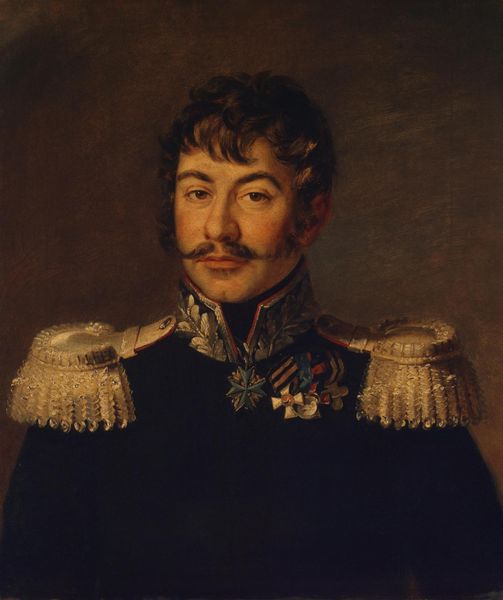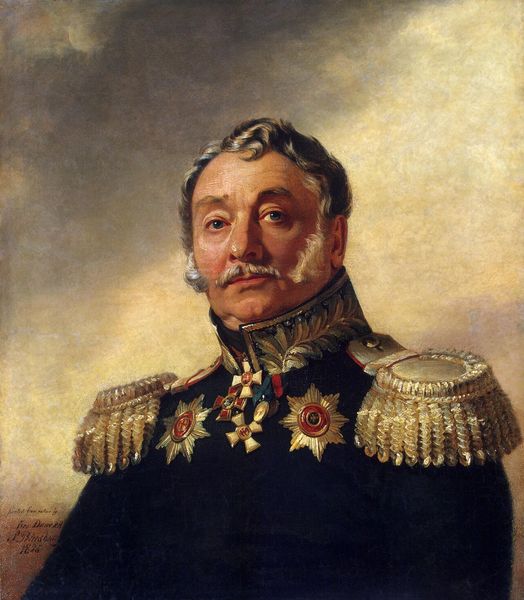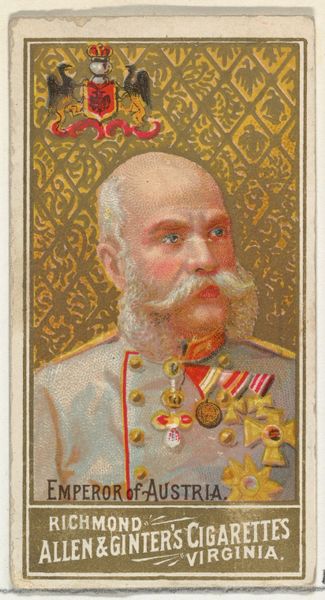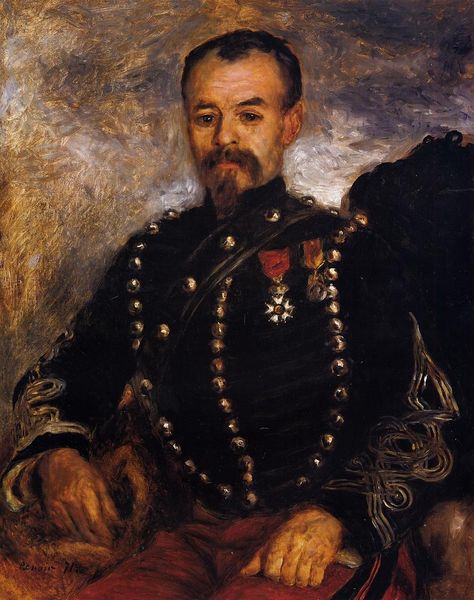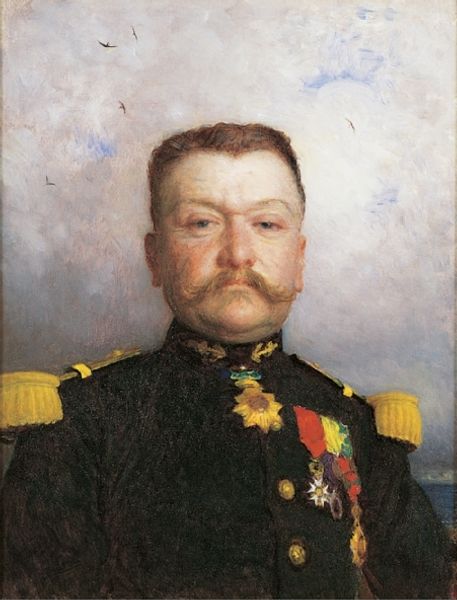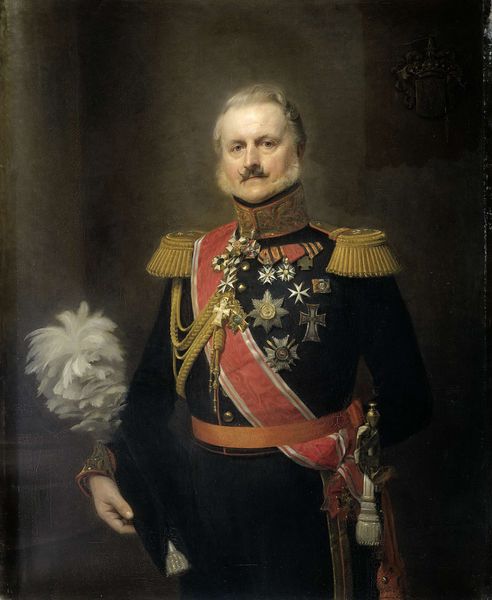
painting, oil-paint
#
portrait
#
painting
#
impressionism
#
oil-paint
#
neo-impressionism
#
figuration
#
oil painting
#
france
#
facial portrait
#
academic-art
#
portrait art
Copyright: Public domain
Curator: Before us hangs "Portrait of Monsieur Pool," painted by Albert Dubois-Pillet in 1887, a dazzling example of neo-impressionist portraiture rendered in oil. Editor: My first thought is...intense. Those tiny, vibrant dots almost vibrate on the canvas, especially the way they contrast against the stern formality of his military bearing. Curator: Indeed. Dubois-Pillet, influenced by Seurat and Signac, employs pointillism here, which carries specific symbolic weight. Think of each dot as a single brushstroke and each is deliberately and carefully laid, like the meticulous nature of military bearing and French societal rigidity at the time. The figure here is not someone prone to whimsy. Editor: That is a fascinating way of connecting technique to the sitter's character! But is there some element of absurdity, too? I find the wallpaper behind him overwhelming, almost mocking the stiffness of Monsieur Pool. All those riotous details, like rebellious thoughts crowding in behind his proper exterior. Curator: I would counter, however, the tapestry-like wallpaper echoes themes of formality. We are seeing symbols of wealth and authority but are now translated to the domestic sphere; we should note Dubois-Pillet himself had a complex relationship with authority, as a member of the French Republican Guard but also an active participant in avant-garde artistic circles. Editor: Yes, that contrast! It’s as if he is placing his portrait subject in an active conversation between those structures of power. I see so much vibrant life and curiosity struggling inside and behind this imposing facade. I really didn’t think I could get this worked up about a dude with a handlebar mustache. Curator: And it may come back to our initial perception – these “dots” and symbols may reflect, both then and now, themes of status and its accessibility. Is the facade a tool for status, and if so, who gets to possess this image of “authority”? Editor: Exactly. Authority then, authority now, reframed in light and color... I am totally converted! Curator: Indeed, and it allows us as modern viewers to examine themes that seem stuck in time when given form.
Comments
No comments
Be the first to comment and join the conversation on the ultimate creative platform.
